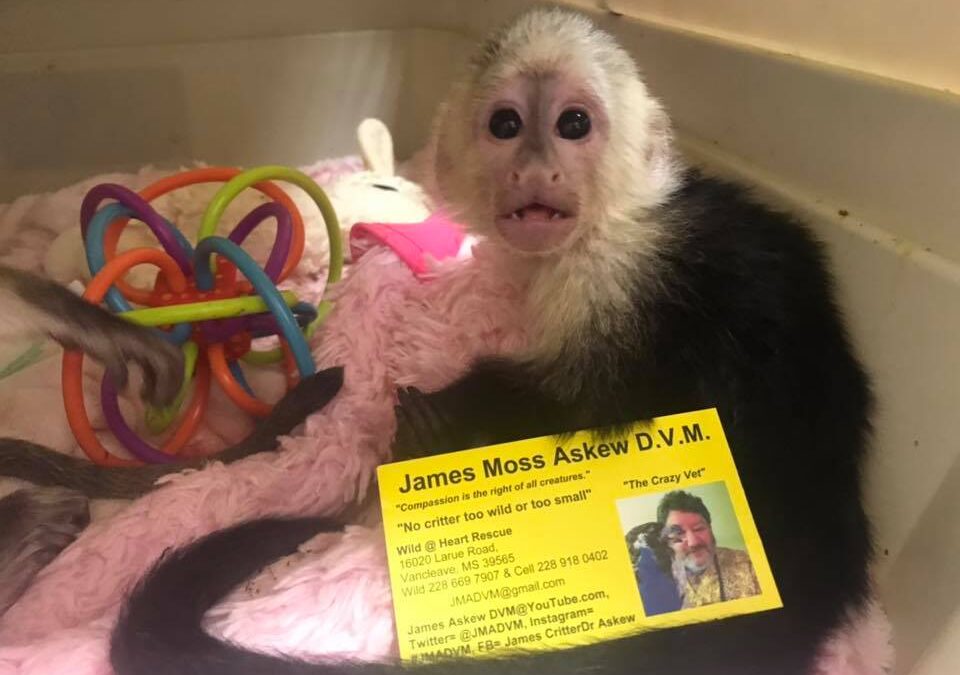While having a great morning off and playing with my monkey (yes I have a real monkey) some thoughts came to me.
How many times a week do we lecture a client on the necessity to protect and maintain the microbiome in our patients? Well, I counted and it was 3 times yesterday alone. I’m off today so I get to write about it.
With our increasing knowledge of our own microbiome and the deleterious effects that antibiotics can have on a healthy body, it’s getting hard to treat a dermatitis case without mentioning that this could be a diarrhea case as a side effect. Then it occurred to me with a discussion from a good friend, Scott St Germain, that my hospital build could have the same problems. Boom!! Mind blown.
Since the advent of modern medicine and antibiotic use, we discovered that we have created superbugs. For example, the iatrogenic or hospital-acquired infections (HAI) like methicillin-resistant staphylococcus aureus (MRSA) which makes every doctor cringe at just the mention of its name. Don’t forget about those organisms that have become resistant to hospital disinfectants.
I thought in my line of work that I was guilt-free but I am wrong. In my two decades of hospital experiences, I have personally placed my life and lungs in jeopardy just with chlorine or ammonia compound fumes. What I didn’t realize was that quaternary ammonia compounds alone have been through several iterations because of the chronic abuse we put our hospitals, staff, patients, and clients through. These iterations were necessary because the bacteria and infectious agents were becoming resistant to the chemical cleaning protocols. So there you have it, I’m guilty of those practices.
In a recent metagenomic study, there are over 60 possible species of bacteria in the average mammal’s gut and we’ve only cultured and been able to grow a few. Then I’m reminded that bacteriophages can also aid in the exchange of genetic information that can aid in antibiotic resistance. This knowledge is not only fascinating but a truly scientific mind just came up with 1000 more unknowns. So literally, the more we learn the less we know.
So we are truly in the dark about our own microbiome in its entirety. There are over one trillion bacterial species on this planet and we have only discovered, plated, and mastered a few. This means that space travel is postponed until we can master our innards. It would be disastrous to send a human into space without completely understanding the many organisms that we were taking with us. If you are a science fiction fan your mind should be reeling with the possibilities. One man boards the capsule and several light years later something else crawls out.
Maybe the lesson here is to try and treat more diseases with the known bacterial species when at all possible. It should work, right? Competitive inhibition principles and just the struggle from bacteria that are normally present will at least inhibit the pathogenic growths. Luckily there are several probiotics on the market and new cultures are being discovered regularly. A colitis treatment is sometimes as simple as giving a more beneficial species of bacteria and then use an antibiotic as needed.
So we inoculate or better yet preserve the good microbiome whenever possible and let nature be our guide. We learn more and we preserve more. Until then stick to the rule, “Above all else, do no harm”.
So now I have to tackle the question of how to protect the hospital’s microbiome. Scientifically speaking, I don’t have the time to culture 100 hospitals. I’m sure there are studies that exhibit average hospital bacterial counts and associated species but that’s still not very logical. The best answers will be regional and from hospitals that have already done damage to the building’s microbiome. The scientific method has us asking 1000 more questions which are fine but isn’t going to answer enough by the time I’m ready to open.
Or I can choose an inoculate that is FDA approved generally regarded as safe (GRAS) in a probiotic cleaning medium. I can choose an inoculate that is FDA approved GRAS for all animals tested. I can choose an FDA approved GRAS inoculate that eats and decreases biofilm by producing its own biosurfactant. I can choose an FDA approved GRAS inoculate that outcompetes other pathogens because of its low metabolism and energy requirements. I can choose an inoculate that is FDA approved GRAS and exhibits no antibacterial resistance. I can choose an FDA approved GRAS inoculate that only activates when I say the magic words or add the magic H2O. I can choose an FDA approved GRAS inoculate that is approved for food preparation. Which means I can eat at my hospital safely. (Evil laugh) “Mrs. Jones, Maybe you would like some popcorn and lunch while you wait?”
Luckily Z Biosciences has developed that line of products. In short, I can thoroughly clean my hospital, reduce biofilm, not add to the previous toxicities, not tarnish other protected surfaces, be safe enough to eat on, be safe enough for very sensitive species, no dwell times in the cleaning process and allows us to breathe cleaner air.
So now I sleep better knowing I’ve protected my staff microbiome, patients microbiome, and my hospital’s microbiome. My bacteria are applauding my choices……… I can hear them.
If only playing with my monkey was this productive every day.
Bye for now,
James “CritterDr” Askew
James CritterDr Askew DVM has been practicing veterinary medicine for more than 20 years with patients all over the country but calls the Mississippi Gulf Coast his home. His staff and clients know that laughter is the best medicine and something all species respond to. There is no creature too great or too small that can’t benefit from his love of life.


Recent Comments